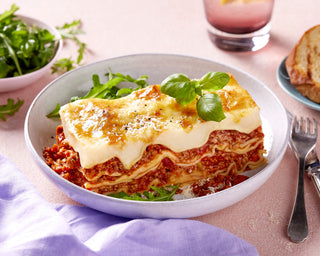What are carbohydrates?
There is so much confusion about whether we should be eating carbs or giving them a big miss. We tend to use the word "carbs" rather loosely, to describe food sources of the nutrient carbohydrate. Foods like bread, rice, pasta, potatoes and breakfast cereal are all called carbs but in fact they are really foods rich in the nutrient carbohydrate. There also many other sources of carbohydrate in our diet, like fruit, legumes, sugar, starchy vegetables and wholegrains — and we shouldn’t be collecting all our carbs in one basket. We all know that carbohydrate is our body's preferred source of energy. According to Nutrition Australia’s revised healthy eating pyramid, the foundation of a healthy diet should be made up of plant foods like wholegrains, fruits, vegetables and legumes, most of which are excellent sources of carbohydrate. Carbohydrate rich foods not only provide us with energy, but they also provide us with dietary fibre, including resistant starch, as well as an array of vitamins, minerals and other phytonutrients which play a vital role in helping to keep us healthyThe effect of low carb diets
When cutting out carbs in an attempt to lose weight, it may initially appear to be working in terms of seeing weight loss on the scales. However, the reason for this is largely due to fluid loss. With every gram of carbohydrate we store 3 grams of water — when we cut out carbohydrate rich foods from our diet, we are also losing water weight. In the short term, it may seem like you are losing fat on this great new diet, but in reality, when you start reintroducing these foods back into your diet, the weight will go straight back on again. Of course there are some kilojoule savings to be had when you cut out some of the less nutritious carb sources like soft drinks, cakes, sweet biscuits, doughnuts, ice cream and chocolate. Remember that sugar makes fat taste great so all you may need to do to manage your weight is just reduce your sugar intake and keeps the good carbs in.Carb quality & quantity — Good vs Bad
When thinking about quality carbs — go for nutritious sources, such as oats, rye, ancients grains, quinoa, freekeh, teff, millet and other wholegrains, wholemeal or seeded breads, legumes and all the colourful fruits and vegetables. These foods provide energy for our brain to function and are stored as glycogen to fuel our muscles, they also provide fibre to keep everything moving through our digestive system. Without carbohydrate rich foods in our diet, we can be left feeling tired, lethargic and grumpy!

In terms of quantity: Ensuring correct portion size when consuming carbohydrate sources is key to weight management and kilojoule control. Visit the Eat for Health website to get a comprehensive list of ‘what counts as a serve?’ to help you with portion control and serving sizes. Also, if you are looking for an easy solution to managing your diet take a look at Dynamic’s healthy and nutritious chef prepared meals. The meal portions are already specified by our team of nutritionists, ensuring you are eating the correct quality and quantity of carbohydrates for a healthy balanced diet. Please note that information is of a general nature and is not intended to replace personalised medical care or professional advice. If you do decide to follow a low carbohydrate diet remember to consult the advice of an Accredited Practising Dietitian beforehand. A dietitian will be able to tailor dietary advice to ensure that you are meeting your nutritional requirements adequately and minimise the chance of deficiency.









